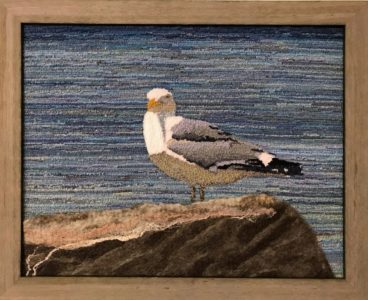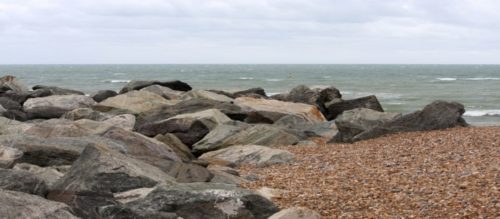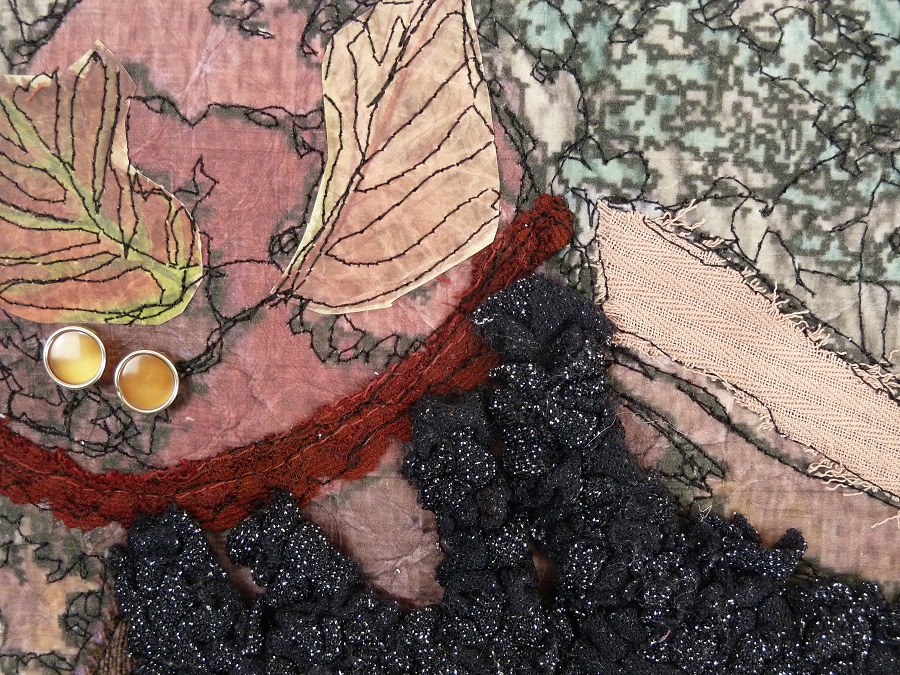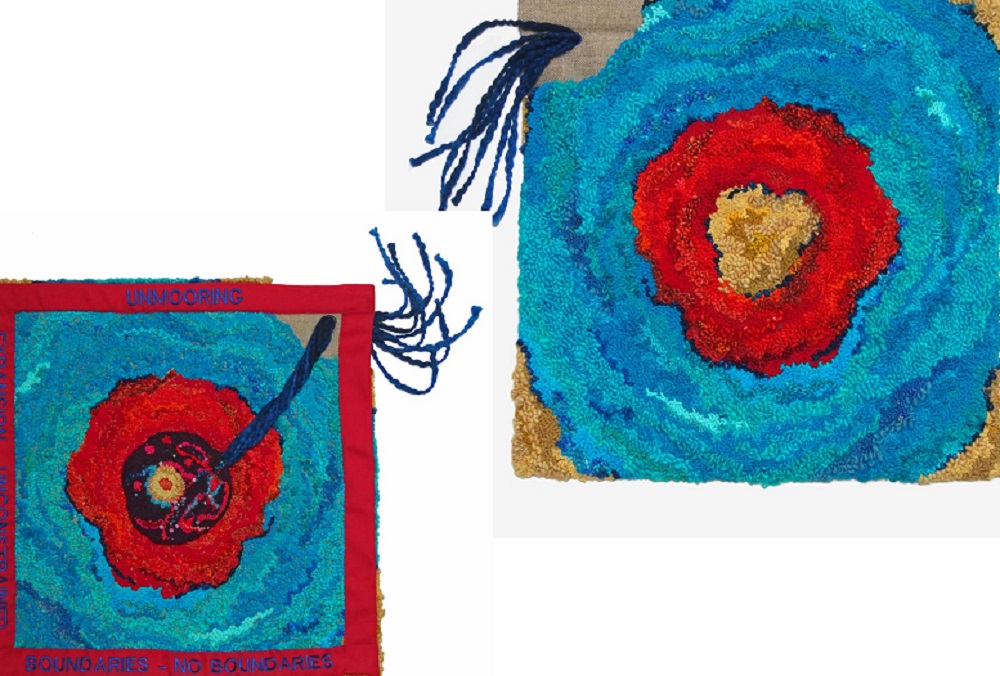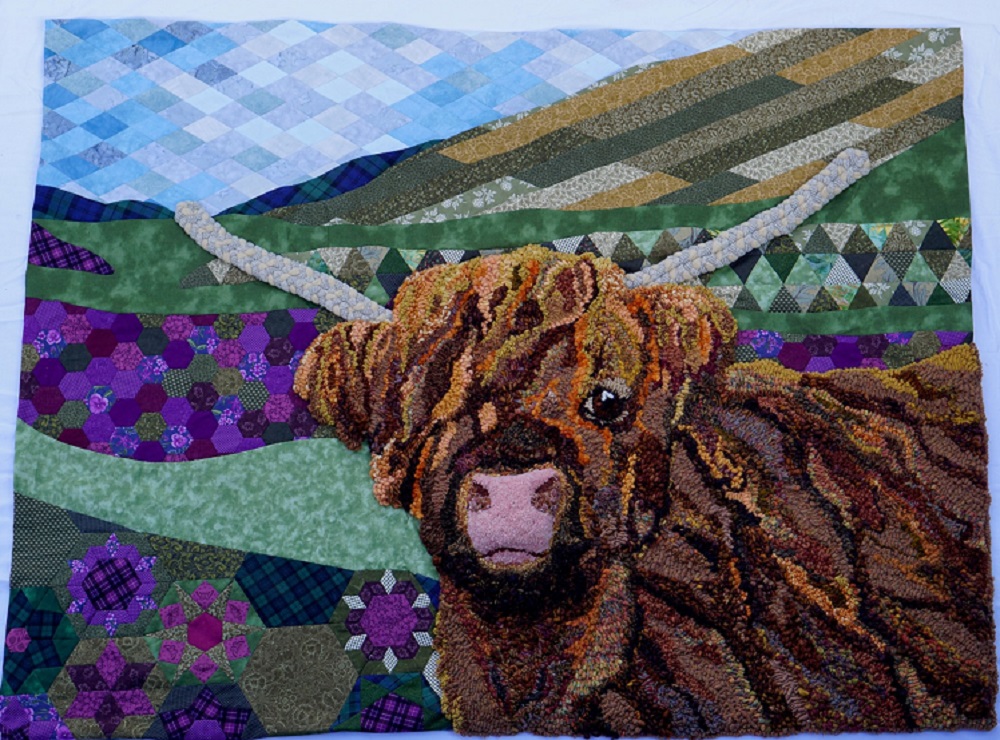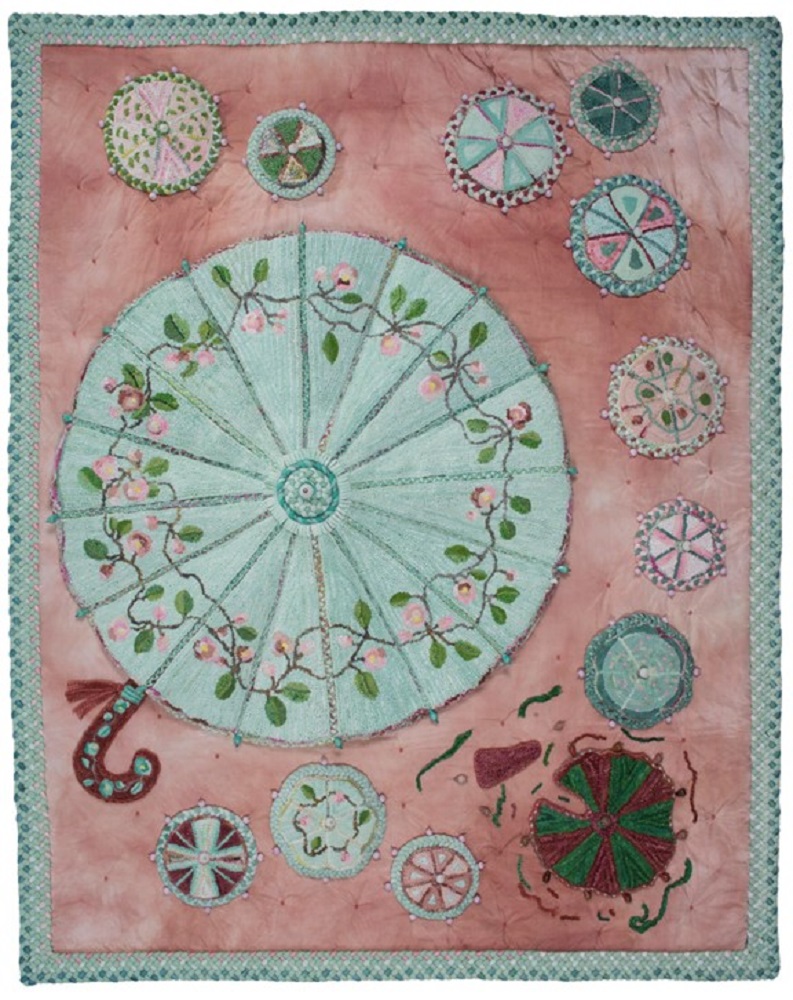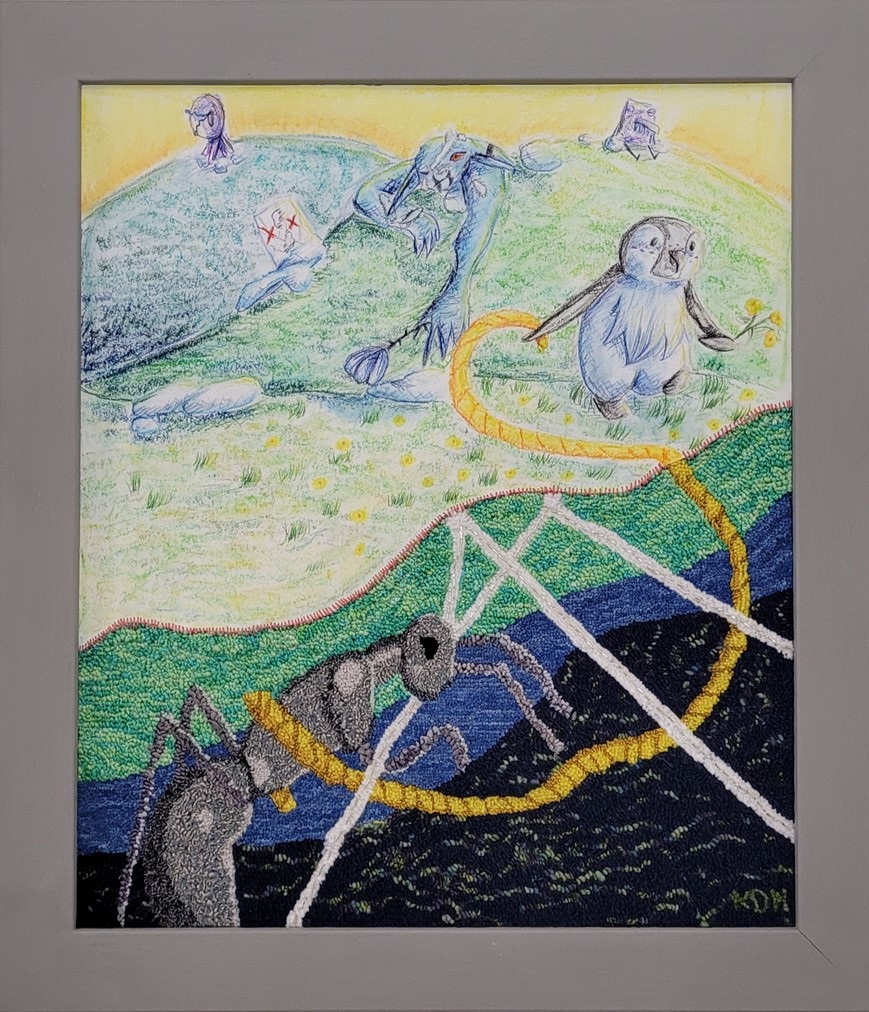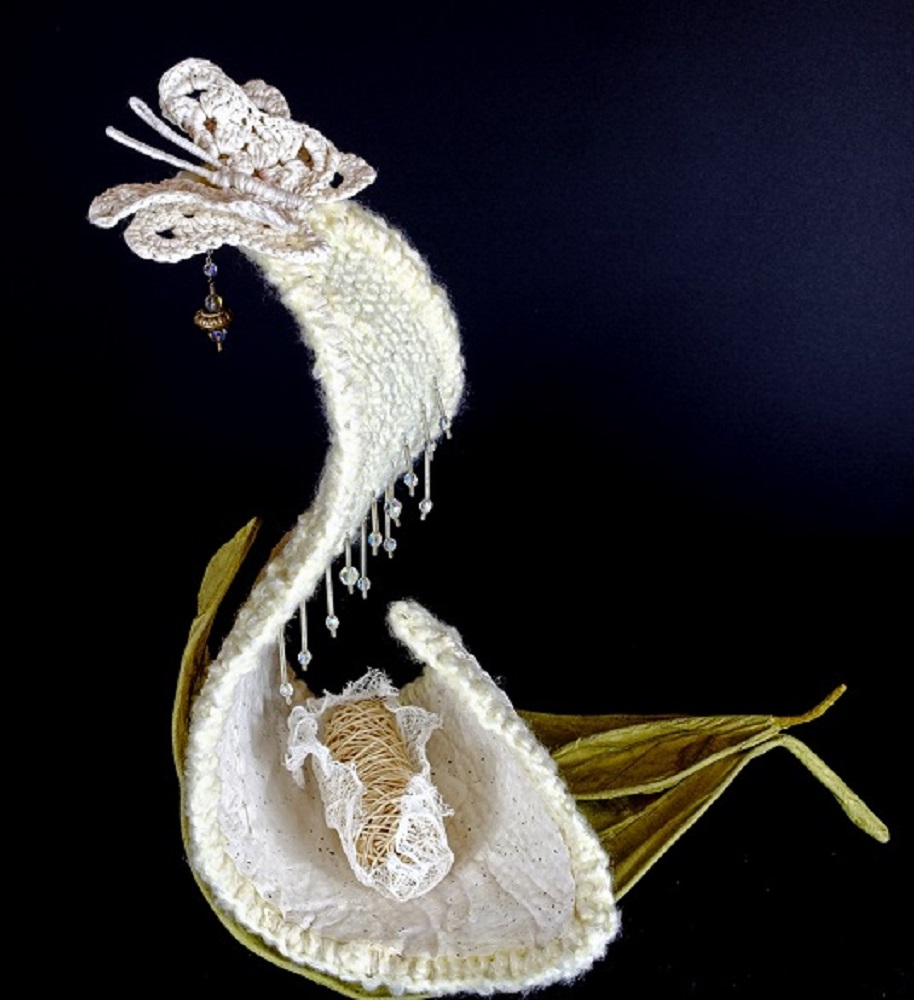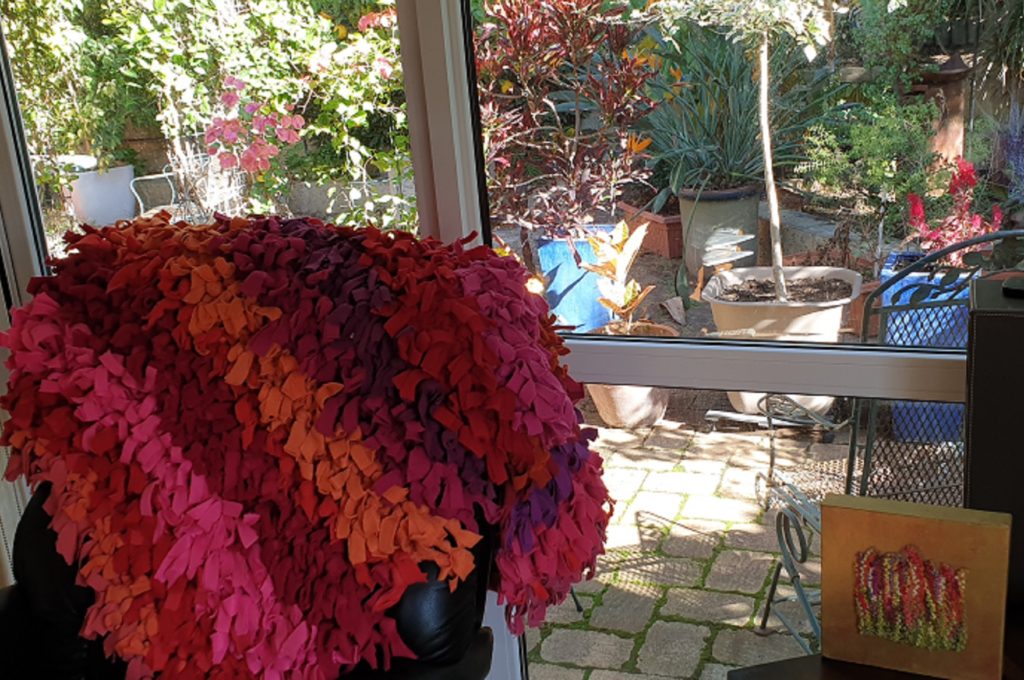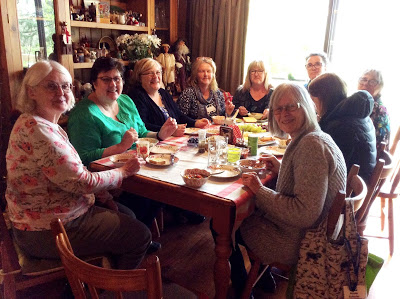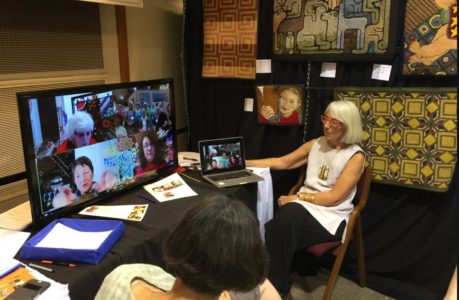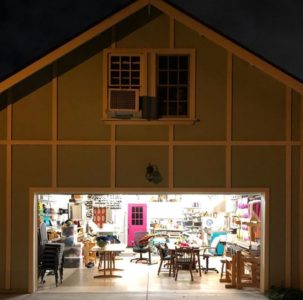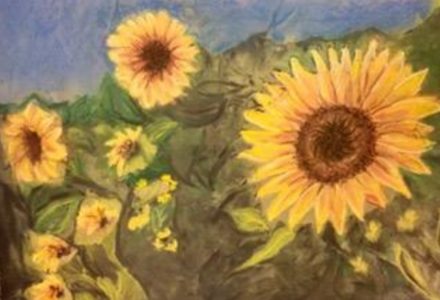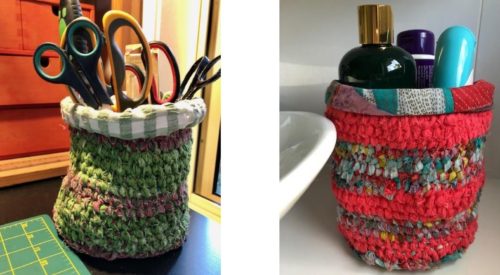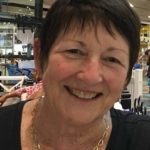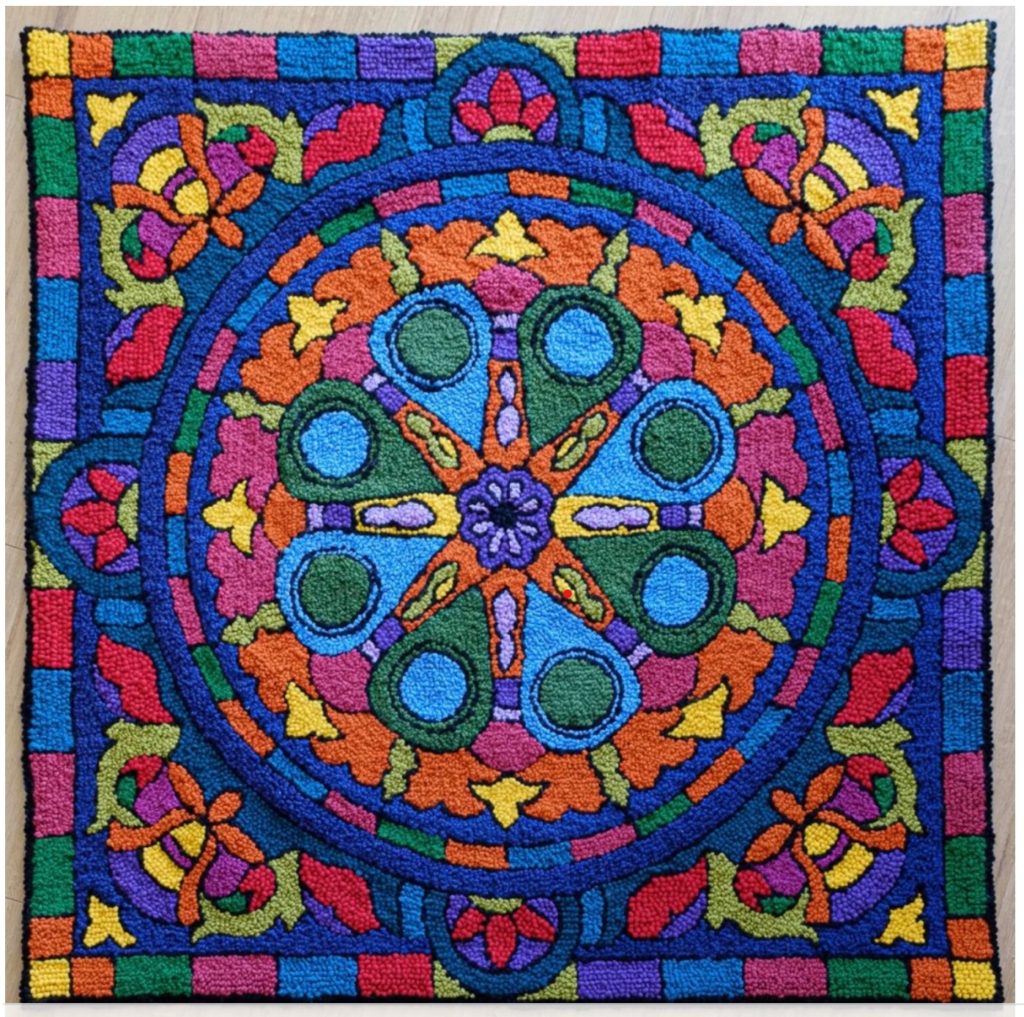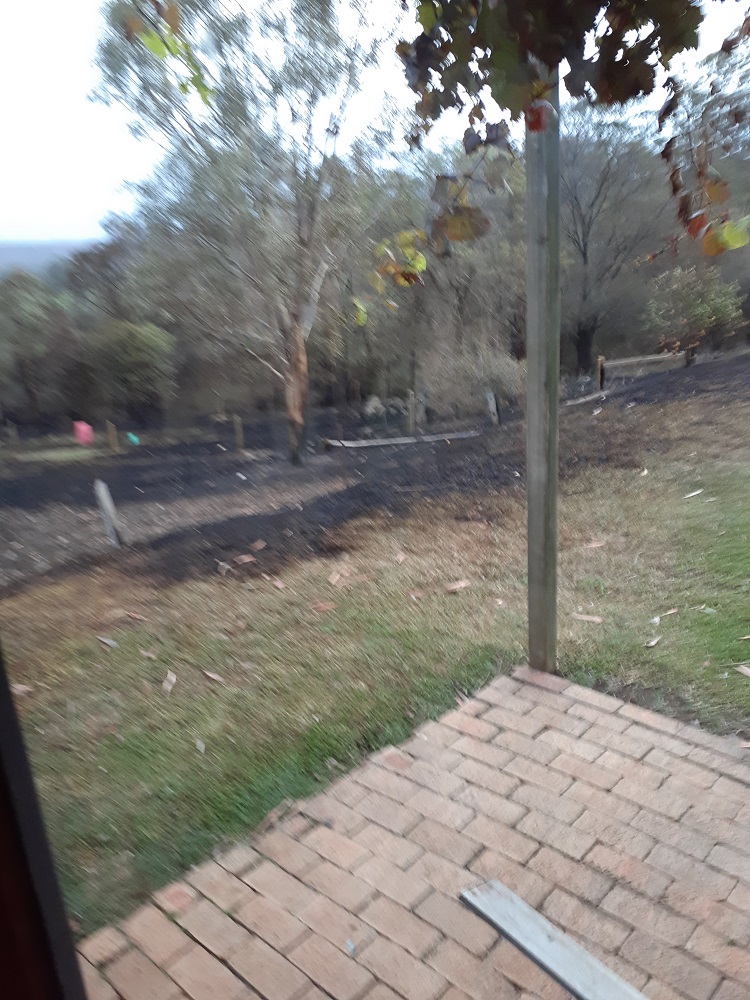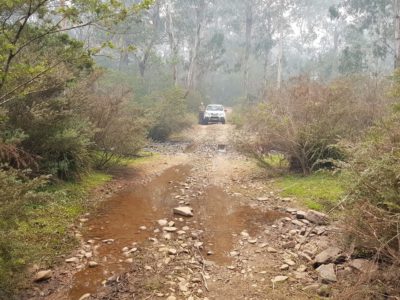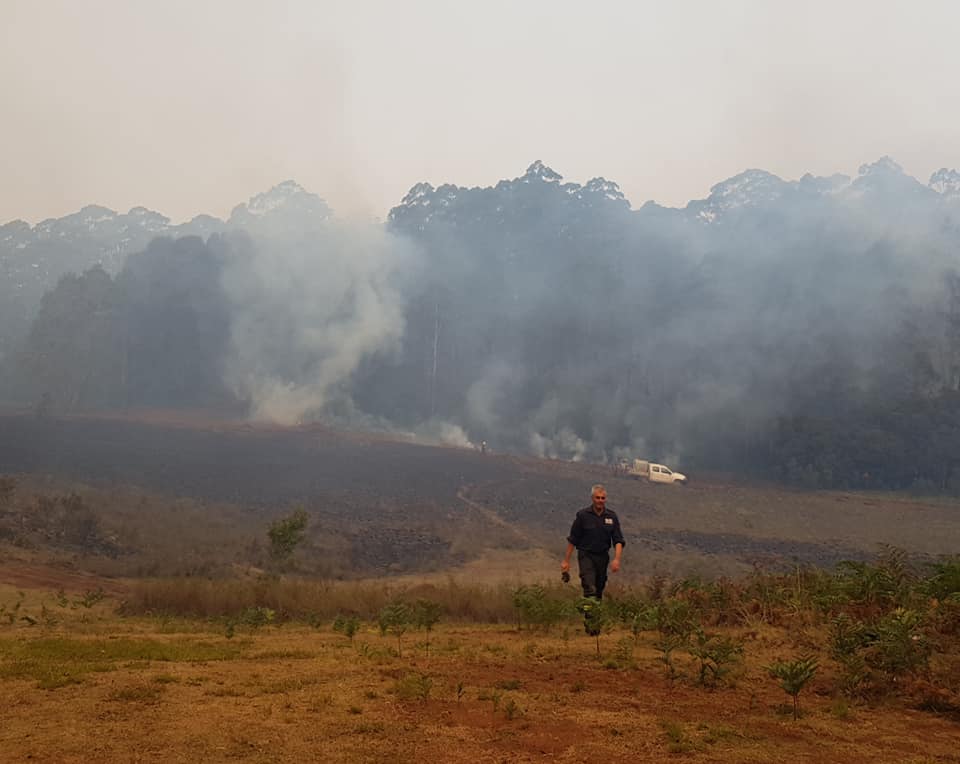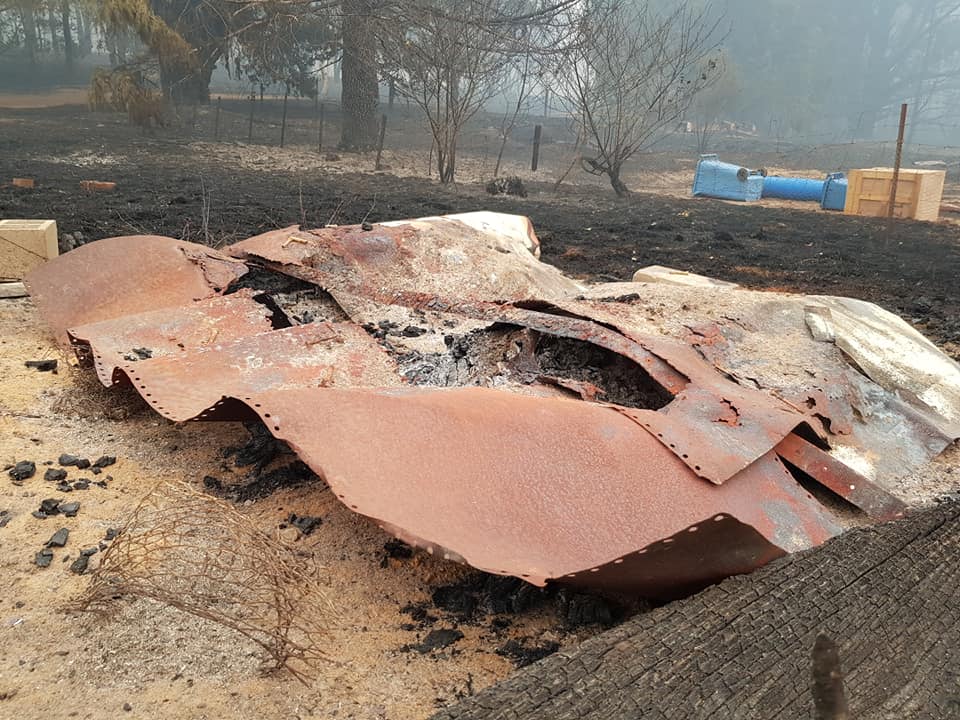ISSN 2207-100X February 2022
SAVE the DATES – Here’s to a good start to the New Year!
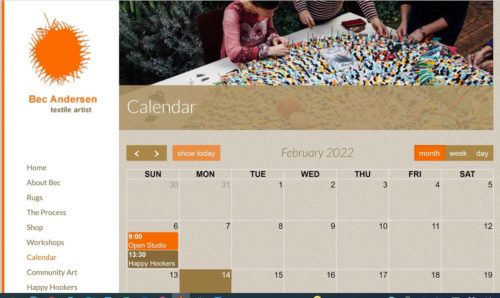
updating calendars, networking, coming together to source and share materials… don’t miss sharing “worms” at the end of this Blog.
Did you know that you can find out about rug hooking groups around Australia on this Australian Rugmakers Group website – just click Current Events
Some Australian rug groups meet “in person” – others online, and some groups, like the ones in Sydney (Epping), in Victoria, and in South Australia, do both.
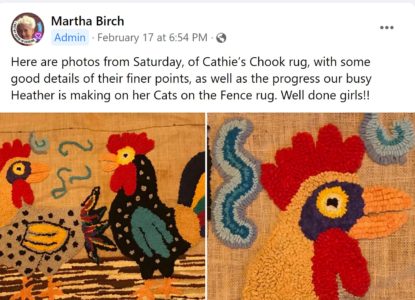
In NEW SOUTH WALES a group called From Rags to Rugs, Sydney Rug Hookers meet in the north shore suburb of Epping to learn rug making techniques, encourage and inspire each other. Martha Birch, the groups facilitator, welcomes all rug hookers to their regular meetings, gives tuition to any newcomers, as well as paid Workshops.
Workshops.
Martha can also offer advice on where to source rug hooking materials and equipment. The group meets monthly on the 2nd Saturday, from February to November. For more information email Martha at: marthabirch@gmail.com
 In Milton on the New South Wales Central South Coast, you’ll find in-person gatherings on the 1st & 3rd Friday of the month in Miriam Miller’s Rug Room at Narrawilly Farm, you can’t miss it, it’s surrounded to the north and east by sunflowers. Miriam’s Narrawilly Proggy Ruggers have been meeting since 1994. Miriam gives private workshops as well as holding her groups gatherings. To contact Miriam, email narrawillyfarm@shoal.net.au “Connecting Us” Miriam’s newsletter is archived on this website… contact her if you’d like to receive it by email.
In Milton on the New South Wales Central South Coast, you’ll find in-person gatherings on the 1st & 3rd Friday of the month in Miriam Miller’s Rug Room at Narrawilly Farm, you can’t miss it, it’s surrounded to the north and east by sunflowers. Miriam’s Narrawilly Proggy Ruggers have been meeting since 1994. Miriam gives private workshops as well as holding her groups gatherings. To contact Miriam, email narrawillyfarm@shoal.net.au “Connecting Us” Miriam’s newsletter is archived on this website… contact her if you’d like to receive it by email.
 In Victoria, there are now two rug hooking groups. Members of the original group – Victorian Rug Makers, Yarra Valley Group, travel to meet at each other homes. The new group, the “South Coast Rugmakers” meet at Chris’s house in Leongatha.
In Victoria, there are now two rug hooking groups. Members of the original group – Victorian Rug Makers, Yarra Valley Group, travel to meet at each other homes. The new group, the “South Coast Rugmakers” meet at Chris’s house in Leongatha.
Since COVID caused everyone to isolate, members from both groups keep track of each other on a Facebook group This group is open to all rugmakers.
Next month Victorian group members are going to the Fair! The Lost Trades Fair in Bendigo on 19th & 20th March, where they will be demonstrating rug hooking. More information on the Fair and to purchase tickets click here.
 SOUTH AUSTRALIA – Strathalbyn: The StrathMatters are another “online” group, but when getting together they gather at the Strathalbyn Neighbourhood Centre, Parker Avenue, Strathalbyn, between 10am – 12noon, on the first and third Fridays of the month. Facilitator Judith Stephens, designs rugs, gives workshops, takes part in the SALA trail and Craft Fairs and organizes rug hooking events for her group. Follow their Blog and join their Facebook Group to see their work. This checkered rug was locker-hooked as a Christmas present by Christina; its now in position in apartment under desk and between main rug as ordered by her second son.
SOUTH AUSTRALIA – Strathalbyn: The StrathMatters are another “online” group, but when getting together they gather at the Strathalbyn Neighbourhood Centre, Parker Avenue, Strathalbyn, between 10am – 12noon, on the first and third Fridays of the month. Facilitator Judith Stephens, designs rugs, gives workshops, takes part in the SALA trail and Craft Fairs and organizes rug hooking events for her group. Follow their Blog and join their Facebook Group to see their work. This checkered rug was locker-hooked as a Christmas present by Christina; its now in position in apartment under desk and between main rug as ordered by her second son.
QUEENSLAND – Landsborough: The Sunshine Coast Fibre & Textile Artists meet on an occasional basis at Judi Tompkins Studio, Palimpsest. The “gatherings” that started out as a rug hooking group now focus on both craft/art and the diverse interests and skills of the participants.
 On 26th & 27th March 2022 Judi’s Studio will be open
On 26th & 27th March 2022 Judi’s Studio will be open from 10am-4.00pm as part of Open Studios – Sunshine Coast.
from 10am-4.00pm as part of Open Studios – Sunshine Coast.
The curated week-long art trail embraces the region from Caloundra to Coolum along the coastline as well as taking in the Hinterland through popular tourist destinations like Maleny and Montville, including Landsborough. Art enthusiasts and collectors can enjoy a rare opportunity to see behind the scenes, meet and directly support local makers.
You will see there are many more Australian rug making groups listed on the Current Events page; if your group doesn’t show up and you’d like to be listed, or if you’re listed and would like changes made, or have events to publicize please email Jo at: rughookingaustralia@gmail.com
NETWORKING & SHARING MATERIALS: Over the last two years, lockdowns have given many people the time to declutter, and across the country rug hooking groups have received donations of rug hooking supplies.
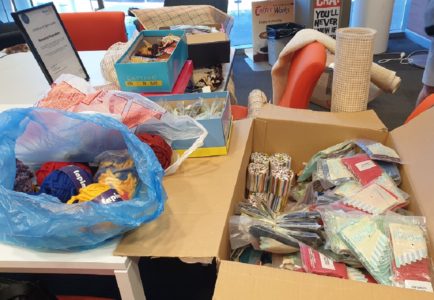
It seems latch hooking must have been very popular in Australia in the 70’s – the catch cry now is… “I’ve been clearing out my deceased mother’s craft supplies”, or “I’m downsizing into a retirement home” or “I’m having problems with my hands and can no longer work on this”. It’s interesting that people are not just disposing of, but are trying to find a home for, craft supplies that were an important to their loved ones.
Through this website we often receive emails from people looking for “pre-cut wool” and the open mesh canvas used as backing for latch hooking so there must still be active latch hookers out there?
wool” and the open mesh canvas used as backing for latch hooking so there must still be active latch hookers out there?
Donations offered for sale are shown on this websites Swap n Sell page. However, some “donations” go straight to local groups like this one in Queensland. The offer came in through the website and the person donating was in the Sunshine Coast area so the donated “supplies” were shared with the Sunshine Coast Fibre & Textile Artists in Landsborough. They said unpacking was like Christmas!
What can a group of traditional rug hookers do with latch hooking supplies?
A couple of members of the Wanneroo Rugmakers who know latch hooking shared the donation, boxes of latch hook wool and backing delivered to their Saturday morning meeting a couple of weeks ago. Here’s the first of the new rugs underway –
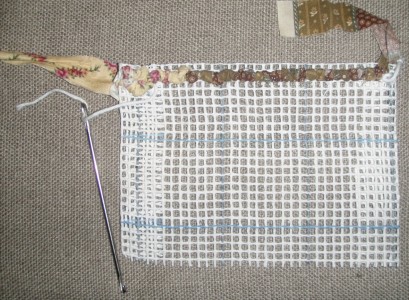
Did you know… the same mesh “canvas” (backing) used for latch hooking can be used for locker-hooking?
Here’s a locker-hooked rug by Anna (from the Wanneroo Rugmakers in West Australia) with a crocheted edge using the same twine as her 1.5m diameter crocheted rug, alongside a rug traditionally hooked with T-shirts.
The best thing about locker-hooking is you can reuse cotton household items like sheets and doona covers. The cotton tears easily into strips and due to the ruching of the material as the fabric strips are gathered up and “locked” into place (see hook with “eye” and locking cord in the image above) there are no raw edges showing.
 Now for traditional rug hooking with strips of woollen fabric… I’m often asked, “where in Australia can you buy wool fabric to cut up for rug hooking. ” Well, there isn’t a supplier – you’d have to buy from a supplier in North America and pay to have shipped. It’s even hard to find used wool garments in Op Shops here because our winters aren’t as severe as in the North and most of us opt for light-weight synthetic winter garments. This doesn’t help the person who contacted me recently and would really like to give hooking, with wool fabric, creating even rows of loops a go. I told her I would put the word out that she was looking to buy cut strips of wool fabric. I keep using that term “wool fabric” because we in Australia use the term wool in place of yarn and hooking with wool yarn is quite different and has a different finish.
Now for traditional rug hooking with strips of woollen fabric… I’m often asked, “where in Australia can you buy wool fabric to cut up for rug hooking. ” Well, there isn’t a supplier – you’d have to buy from a supplier in North America and pay to have shipped. It’s even hard to find used wool garments in Op Shops here because our winters aren’t as severe as in the North and most of us opt for light-weight synthetic winter garments. This doesn’t help the person who contacted me recently and would really like to give hooking, with wool fabric, creating even rows of loops a go. I told her I would put the word out that she was looking to buy cut strips of wool fabric. I keep using that term “wool fabric” because we in Australia use the term wool in place of yarn and hooking with wool yarn is quite different and has a different finish.
I’m thinking particularly of the Victorian Group some of them do use wool fabric to hook with – having had the wool shipped in, and also purchased from Gene Shepherd on one of his trips to OZ. Or those like myself, who purchased wool fabric while traveling in the USA. No doubt – like me they possibly have swatches or cut strips left over from various projects.
If anyone finds themselves with left-over strips (worms) they would like to sell, swap or donate, please send images to show approximately how much you have available and I’ll put you together with the person/s I know are searching.
I know this can be done, as many years ago I wrote an article for Rug Hooking Magazine and mentioned the fact that while Australia has no shortage of sheep, they are shorn and the wool goes off-shore to be milled and the woollen fabric that comes back to Australia is EXTREMELY expensive – you wouldn’t be cutting it up for rugging! Following that article a rug hooking group in California put the call out for leftover worms (strips) and I received a large box full of strips varying in size and colour. Over the years those wool strips have gone into many of the groups rug hooking projects. The best part was, we received that box full of cut strips before we had a cutter. Another tool that has to be purchased in North America and shipped here. The cutters are heavy and shipping expensive!
Woollen blankets are used by Miriam Miller and her group (NSW), Judi Tompkins (QLD) & Kira Mead(WA). Unfortunately, like many Australian mills, the Albany Woollen Mills in WA have closed down. Kira has scoured the Albany Op Shops and I think takes the prize for the most Albany Woollen Mill blankets.
Mead(WA). Unfortunately, like many Australian mills, the Albany Woollen Mills in WA have closed down. Kira has scoured the Albany Op Shops and I think takes the prize for the most Albany Woollen Mill blankets.
Looking for supplies? You’re welcome to use this website to connect with other rug making enthusiasts.
Email questions and they’ll be forward to the appropriate person or group. Happy Rug Making ![]()



